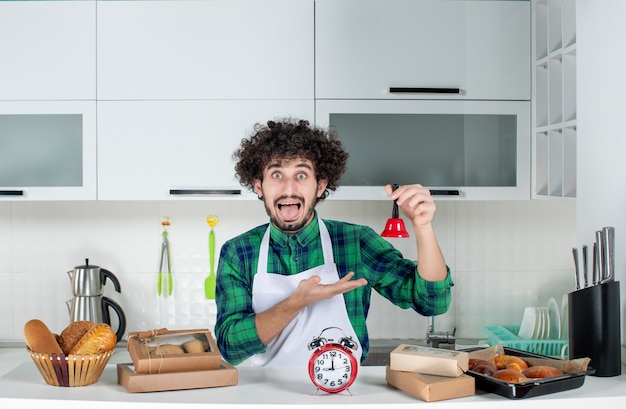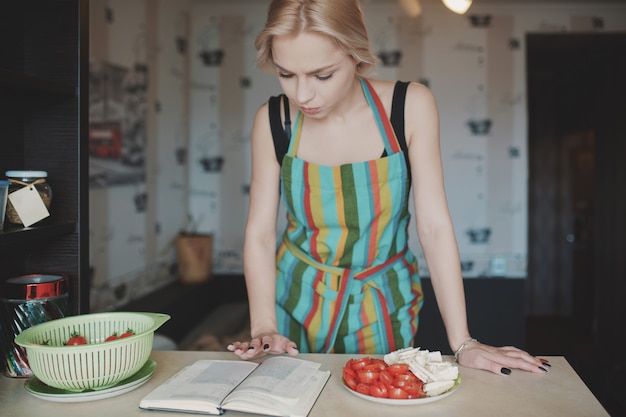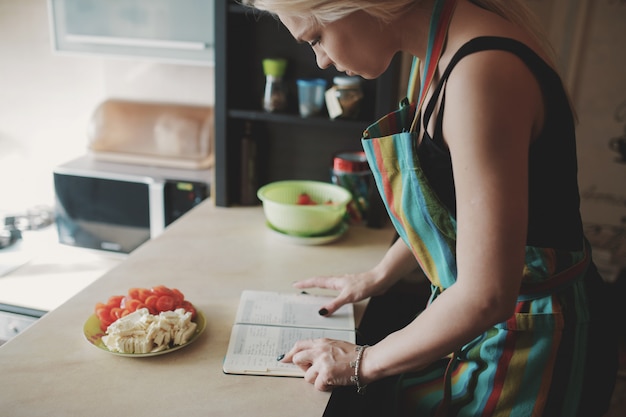Cooking is a beautiful blend of science and art. We follow recipes, but also rely on our senses and intuition to know when a dish is just right. One crucial element of this culinary dance is mastering cooking times. You want to avoid those embarrassing moments of biting into a raw chicken breast or pulling out a dry, overcooked roast. So, let's embark on a journey into the world of cooking times, where we'll demystify the process and empower you to create delicious and perfectly cooked meals.
(Part 1) The Basics: Understanding Cooking Times

Cooking times aren't etched in stone. They're more like a compass, pointing you in the right direction. Many factors influence how long something takes to cook – the size and thickness of your ingredients, the temperature of your oven, the cooking method itself, and even your oven's quirks. But, don't get overwhelmed! With a bit of practice and understanding, you'll navigate these variables with ease.
Factors Affecting Cooking Times
Imagine a chef's toolbox - it's filled with tools to help them navigate the kitchen. These are the elements we need to consider when thinking about cooking times:
- Thickness: Think of a thin steak versus a thick rump roast. The thicker the cut of meat, the longer it needs to cook to ensure even doneness.
- Size: A whole chicken, naturally, will take longer to cook than individual chicken breasts. It's all about surface area and how it relates to the volume of the food you're cooking.
- Oven Temperature: A hotter oven will cook things faster, but it also increases the risk of burning. Experiment with your oven to understand its nuances and how it affects cooking times.
- Cooking Method: Roasting, grilling, baking, frying - each method has its own heat transfer and cooking time considerations.
- Type of Food: Meat, fish, vegetables, grains - they all cook at different speeds.
- Your Oven: Ovens are like personalities - they have their quirks. Some run hotter than others, so understanding your oven's tendencies is key to accurate cooking.
Tools for Measuring Cooking Times
We all have our favorite kitchen tools, and some are particularly essential for mastering cooking times:
- Oven Thermometer: Your oven's temperature gauge might be off, so a trusty oven thermometer is crucial for ensuring consistent, accurate heat.
- meat thermometer: This is a lifesaver for cooking meat to perfection. It takes the guesswork out of determining doneness, leaving you with juicy, flavorful results.
- Timer: We've all been there - completely forgetting about that dish in the oven. A timer keeps you on track and prevents those burnt offerings!
(Part 2) Meat: The Art of Doneness

Meat - the centerpiece of many meals. It's essential to cook it properly for safety and flavor, but overcooked meat can become dry and tough. Let's explore different cuts of meat and their ideal cooking times.
Beef
Beef, a culinary classic, offers a range of cuts, each with its unique texture and flavor. Here's a general guide for cooking various cuts of beef:
| Cut | Recommended Cooking Time | internal temperature | Doneness |
|---|---|---|---|
| Steak (1-inch thick) | 5-7 minutes per side for medium-rare | 130-135°F (54-57°C) | Juicy and tender, with a red center |
| Roast (3-4 lbs) | 20-25 minutes per pound at 325°F (160°C) | 135-140°F (57-60°C) for medium-rare | Juicy and tender, with a slight pink center |
| ground beef (for burgers) | 5-7 minutes per side for medium | 160°F (71°C) | Brown throughout, no pink center |
These are just general guidelines. The thickness of your cut, your personal preference for doneness, and the specific recipe you're using all play a role in adjusting cooking times. Always use a meat thermometer to check the internal temperature for accurate results.
Chicken
Chicken can be trickier than beef. It's crucial to cook it thoroughly to avoid foodborne illnesses. Here's a guide to cooking chicken to perfection:
- Chicken breasts: 20-30 minutes at 375°F (190°C) depending on thickness.
- Whole chicken: About 1 hour and 15 minutes at 350°F (175°C) for a 4-pound chicken.
- chicken thighs: 30-40 minutes at 375°F (190°C) depending on thickness.
It's essential to cook chicken to an internal temperature of 165°F (74°C) for safe consumption.
Fish
Fish is a delicate delight, requiring a light touch. It cooks quickly, so it's easy to overcook it and lose its moisture. Here are some general guidelines:
- salmon fillets: 12-15 minutes at 400°F (200°C) depending on thickness.
- cod fillets: 10-12 minutes at 400°F (200°C) depending on thickness.
- tuna steaks: 5-7 minutes per side for medium-rare.
The best way to determine if fish is cooked is to gently press on the top of the fillet. If it flakes easily with a fork, it's ready.
(Part 3) Vegetables: From Crisp to Tender

Vegetables are a symphony of colors, textures, and flavors. Some crave a crisp bite, while others prefer a soft, melting texture. Cooking times for vegetables vary greatly depending on the type and how you want to prepare them.
Roasting Vegetables
Roasting brings out the natural sweetness of vegetables, turning them into golden, caramelized delights.
- Root vegetables (carrots, potatoes, parsnips): 40-50 minutes at 400°F (200°C) depending on size.
- Broccoli, cauliflower: 20-25 minutes at 400°F (200°C) depending on size.
- Asparagus: 15-20 minutes at 400°F (200°C) depending on thickness.
Before roasting, toss your vegetables with olive oil and seasoning for maximum flavor.
Boiling Vegetables
Boiling is a classic cooking method, but it can sometimes lead to bland vegetables. However, done correctly, it can retain their nutritional value.
- green beans: 5-7 minutes.
- Broccoli: 5-7 minutes.
- Carrots: 10-12 minutes.
- Potatoes: 15-20 minutes depending on size.
Salting the water adds flavor and helps the vegetables retain their bright green color. Don't overcook them - aim for tender but still slightly firm.
Sautéing Vegetables
Sautéing is a quick and versatile method that allows vegetables to retain their vibrant color and flavor.
- Mushrooms: 5-7 minutes.
- Onions: 5-7 minutes.
- bell peppers: 5-7 minutes.
- Spinach: 2-3 minutes.
Use a hot pan and a little olive oil. Don't overcrowd the pan, or the vegetables will steam instead of sauté.
(Part 4) Baking: Sweet Treats and More
Baking is a transformative art, turning simple ingredients into delightful creations. But, mastering baking times is crucial for success. An underbaked cake is a disaster waiting to happen, and an overbaked cookie is a crunchy disappointment.
Cakes
Cakes are a cornerstone of baking, and they come in an endless array of flavors and textures.
- Pound cake: 1 hour to 1 hour and 15 minutes at 350°F (175°C).
- Chocolate cake: 30-40 minutes at 350°F (175°C).
- Vanilla cake: 30-40 minutes at 350°F (175°C).
The classic toothpick test is your guide. Insert a toothpick into the center of the cake. If it comes out clean, it's ready.
Cookies
Cookies, oh cookies, the ultimate comfort food. From chewy chocolate chip to crispy oatmeal, there's a cookie for every taste.
- Chocolate chip cookies: 10-12 minutes at 375°F (190°C).
- Oatmeal cookies: 12-15 minutes at 375°F (190°C).
- Sugar cookies: 8-10 minutes at 375°F (190°C).
Watch your cookies closely, as they can quickly go from golden brown to burnt.
Bread
Baking bread is a rewarding experience, with the aroma alone bringing comfort and joy.
- Loaf bread: 30-45 minutes at 350°F (175°C).
- Rolls: 15-20 minutes at 375°F (190°C).
- Baguettes: 20-25 minutes at 450°F (230°C).
To check for doneness, gently tap the bottom of the bread. If it sounds hollow, it's ready.
(Part 5) Pasta: The Perfect Al Dente
Pasta, a global comfort food, is incredibly versatile. But, it's easy to overcook pasta, turning it into a mushy mess. The key is to achieve al dente, a slight chewiness that makes the pasta sing.
cooking pasta
Here's how to cook pasta like a pro:
- Bring a large pot of salted water to a rolling boil. The salt adds flavor and helps the pasta cook evenly.
- Add the pasta and stir to prevent it from sticking together. The pasta will absorb the water, so add more if needed.
- Cook the pasta according to the package instructions. Most pasta takes about 8-10 minutes, but always check the package for specific times.
- Test the pasta for doneness. It should be al dente, with a slight chew. You can try the "pinch test" - pinch a piece of pasta. If it breaks easily, it's overcooked.
- Drain the pasta. Reserve some of the pasta water for later. It can be used to thin out sauces.
Pasta is a canvas for culinary creativity. Enjoy the journey!
(Part 6) Rice: Fluffy and Delicious
Rice is a staple in many cuisines, a versatile accompaniment to countless dishes. But, getting rice right can be a bit tricky.
cooking rice
Here's a simple method for perfect rice:
- Rinse the rice. This removes excess starch and helps prevent the rice from becoming sticky.
- Combine the rice and water in a pot. The ideal ratio of rice to water is 1:2.
- Bring the mixture to a boil. Then, reduce the heat to low, cover the pot, and simmer for 15-20 minutes.
- Fluff the rice with a fork. This separates the grains and makes the rice fluffy.
Rice is a culinary chameleon, adaptable to countless dishes. From stir-fries to rice pudding, its possibilities are endless.
(Part 7) Time-Saving Tips and Tricks
We all have those busy days when we need to whip up a meal quickly. Here are some time-saving tips and tricks for the busy cook:
- Use a pressure cooker. It significantly reduces cooking times for meat, vegetables, and grains.
- Invest in a good quality food processor or blender. It can chop vegetables and make sauces in a fraction of the time.
- Prepare ingredients in advance. Chop vegetables, measure spices, and get everything ready before you start cooking.
- Use frozen ingredients. They're a great time-saver and can be just as delicious as fresh ingredients.
- Don't be afraid to use pre-made sauces or marinades. They can save you a lot of time and effort.
Time is precious, and there's no shame in taking shortcuts in the kitchen. Just remember to check those cooking times, even with pre-made ingredients!
(Part 8) The Importance of Checking Doneness
Before serving any dish, it's essential to check for doneness. This ensures safety and guarantees a delicious culinary experience.
Checking Meat
For meat, the best way to check for doneness is with a meat thermometer. Insert it into the thickest part of the meat, making sure it doesn't touch any bone.
- Rare: 125-130°F (52-54°C)
- Medium-rare: 130-135°F (54-57°C)
- Medium: 140-145°F (60-63°C)
- Medium-well: 150-155°F (66-68°C)
- Well-done: 160°F (71°C)
The USDA recommends cooking whole poultry to an internal temperature of 165°F (74°C) for safety.
Checking Fish
Fish is a delicate creature, requiring gentle care. To check for doneness, gently press on the top of the fillet. If it flakes easily with a fork, it's ready.
You can also check for doneness by looking at the color of the fish. It should be opaque and no longer translucent.
Checking Vegetables
Vegetables are a bit more forgiving. You can check for doneness by piercing them with a fork. They should be tender, but still have a slight bite.
For roasted vegetables, check for doneness by looking for browning. They should be golden brown and slightly caramelized.
Checking Baked Goods
For cakes and cookies, insert a toothpick into the center. If it comes out clean, it's ready.
For bread, gently tap the bottom. If it sounds hollow, it's ready.
(Part 9) FAQs
Here are some frequently asked questions about cooking times:
What if I overcook something?
Don't despair! Overcooking happens to the best of us. Here are a few ways to salvage a dish:
- For overcooked meat: Try slicing it thin and using it in a stir-fry or soup.
- For overcooked vegetables: They can be added to a smoothie or used in a soup.
- For overcooked pasta: It can be used in a casserole or salad.
How do I know if my oven is running hot or cold?
Use an oven thermometer to check the accuracy of your oven's temperature gauge. Place the thermometer in the center of the oven and let it sit for 10 minutes. If the temperature is consistently higher or lower than the setting on your oven, you'll know if it's running hot or cold.
How can I make sure my meat is cooked evenly?
The best way is to use a meat thermometer. You can also help by ensuring the meat is the same thickness and turning it halfway through cooking.
What should I do if I'm unsure about a cooking time?
Always err on the side of caution. It's better to undercook something slightly than to overcook it. You can always cook it for a few more minutes if needed.
What are some good resources for finding cooking times?
There are countless resources available online and in cookbooks. Explore websites like Allrecipes, Epicurious, and Food Network.
Cooking is a journey of discovery. The more you cook, the better you'll become at estimating cooking times. So, experiment, learn, and enjoy the culinary adventure!
Everyone is watching

Corn on the Cob: The Ultimate Guide to Perfectly Cooked Ears
Healthy MealsAh, corn on the cob. Just the name evokes images of sunny days, barbecues, and that sweet, juicy flavour that ...

Perfect Pork Roast Oven Cooking Time: A Guide to Delicious Results
Healthy MealsThere's something truly satisfying about a perfectly roasted pork. The aroma alone is enough to make your mout...

Ham Cooking Time: How Long to Bake, Smoke, or Boil a Delicious Ham
Healthy MealsAh, ham. It's a classic, isn't it? A real crowd-pleaser, especially around holidays. And when done right, it'...

Scallops: The Ultimate Guide to Perfect Cooking
Healthy MealsAh, scallops. Those delicate, sweet, and utterly delicious morsels of the sea. They hold a special place in my...

Spaghetti Squash: The Ultimate Guide to Cooking and Serving
Healthy MealsRemember that time you saw spaghetti squash at the supermarket, looking all bumpy and strange, and thought, "W...
